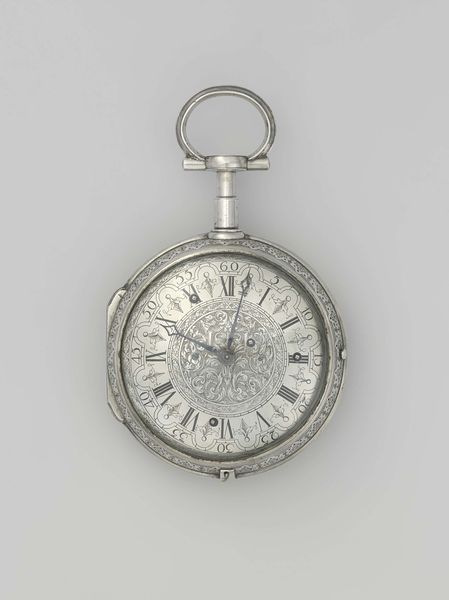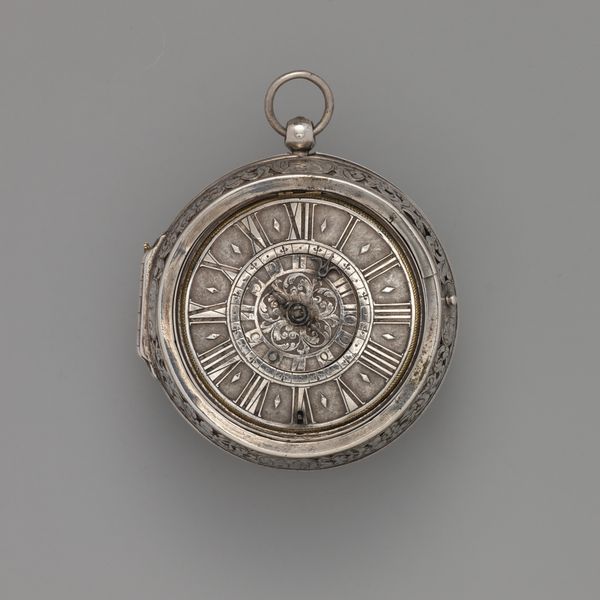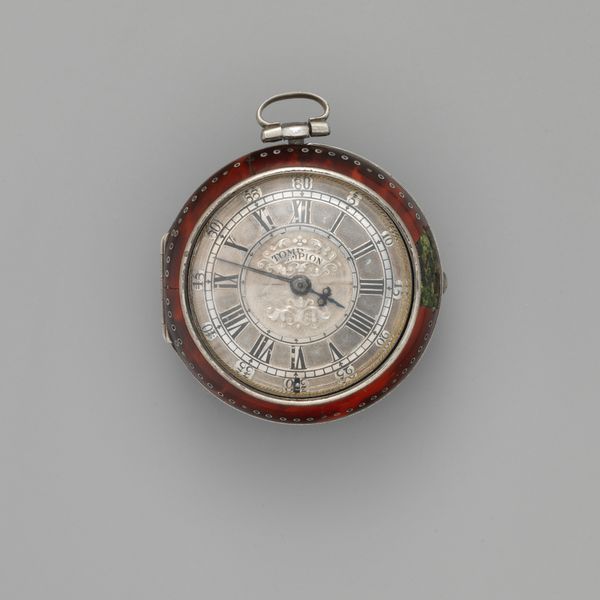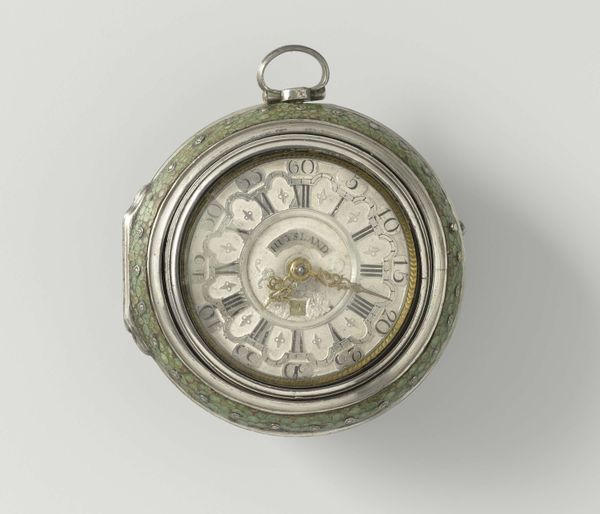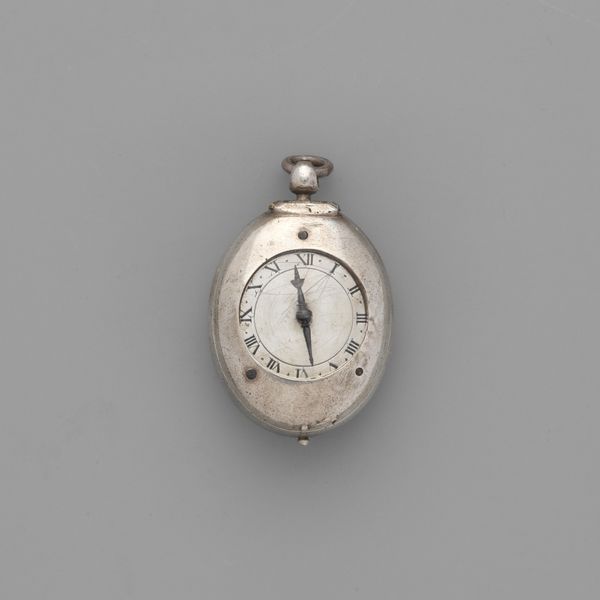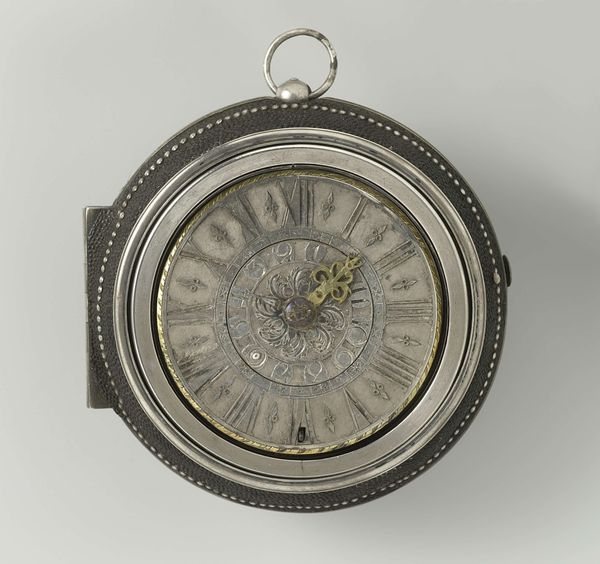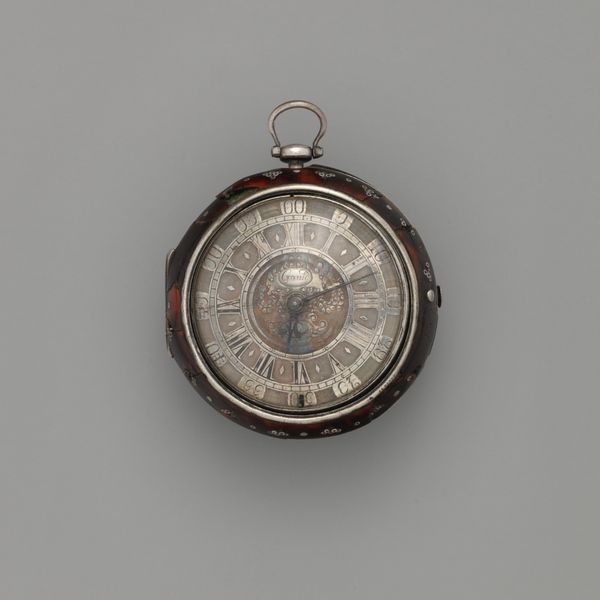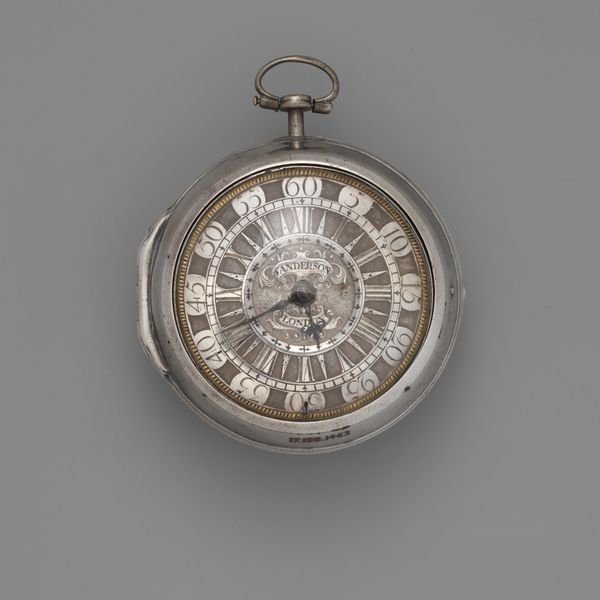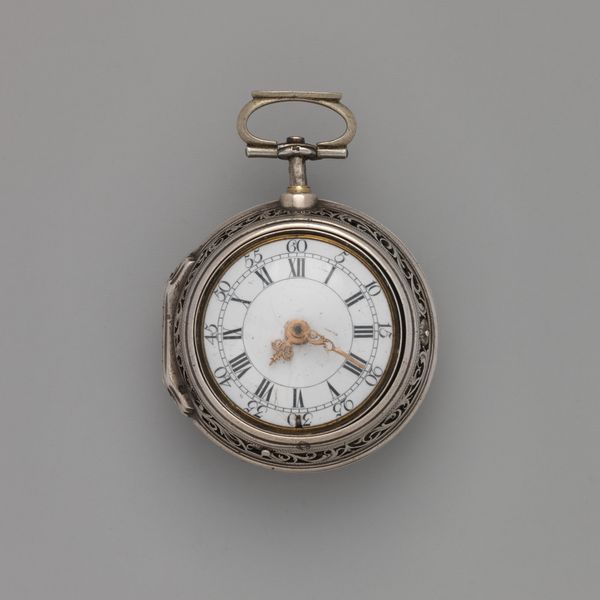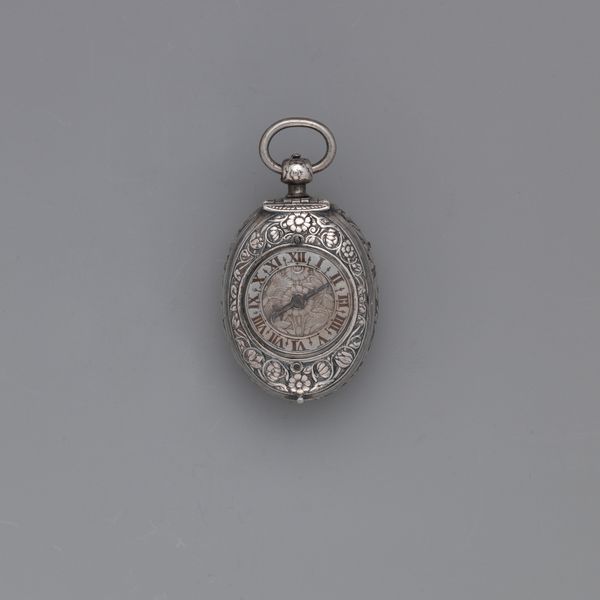
silver, metal, sculpture
#
silver
#
metal
#
ancient-mediterranean
#
sculpture
#
islamic-art
Dimensions: length 4.0 cm, width 3.5 cm
Copyright: Rijks Museum: Open Domain
Curator: Before us is a "Pendant Watch with an Inner and an Outer Case," likely crafted between 1610 and 1625 by Matthijs Bockels. Its medium is predominantly silver and other metals; it is also considered a sculpture. Editor: Its form is surprisingly organic. Ovoid, smooth, cool—it evokes an egg more than the stern mechanisms of time we usually associate with watches. There is a strange calmness emanating from it. Curator: And yet consider the material and process behind it. The mining of the silver, its refinement, the casting and precise carving of the casing—it speaks of extensive labor organized under specific socio-economic conditions. How does our understanding of time and labor coalesce in this tiny object? Editor: Right. This connects powerfully to time. This watch becomes more than a marker; it’s a repository for human exertion and, crucially, an emblem of status. The capacity to possess time—a device dictating one’s own rhythms of life versus enslavement by it. What did time represent for various groups, who could afford to own a time telling device like this? Curator: That's compelling. It also points to the interplay of technology and design, craft and industry. These metalworks represent not only the accumulation of material wealth but also intellectual capital. Editor: This object gives us a potent microcosm of the era. This is not only a tool but a symbol of burgeoning global capitalism, wrapped in this deceptively docile little package, its sheen so reflective, almost too polished, hinting at more than time tracking alone, don't you think? Curator: Indeed. Through the lens of its materials and production, we see the larger socio-economic currents of the early 17th century mirrored. Editor: A beautiful reminder to consider both what something is made of and for whom.
Comments
No comments
Be the first to comment and join the conversation on the ultimate creative platform.

